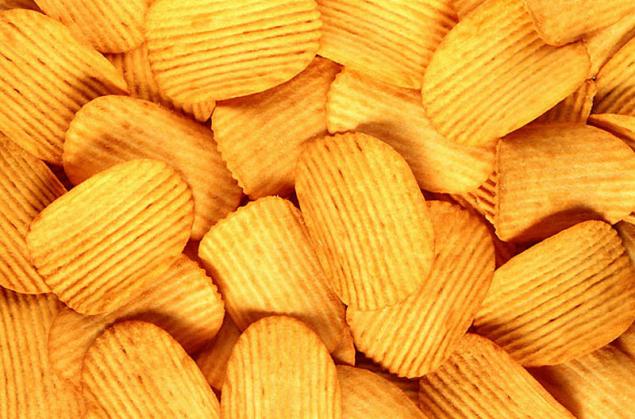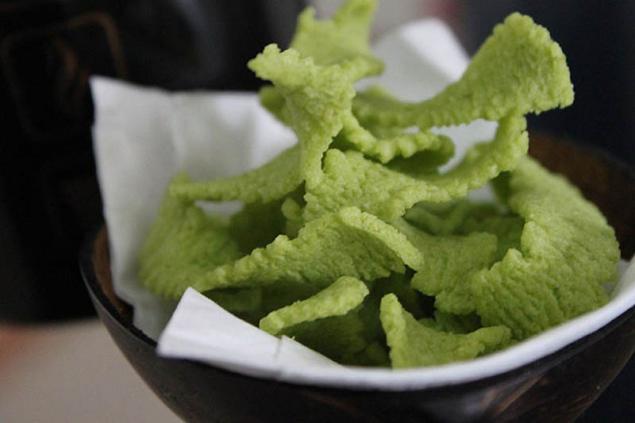1331
What are the chemicals we consume every day? (6 photos)
Even the most experienced cook may not fully appreciate the quality of the product on the eye. In some cases, smell and color perform a function beautiful packaging that hides a questionable set of ingredients. The researchers tested some products, to find out where and under the guise of what may be hiding potential danger.

1. Bhutan

Universal gas is suitable not only for lighters. The food industry considers butane as an artificial antioxidant. The chemical element added to chicken nuggets to keep a fresh look. The dish, which in appearance looks like a freshly cooked, it can be podzapravleno butane.
Most often found in ready-made processed foods with long shelf life, such as frozen foods, crackers, chips and fast food.
2. Estrogen

Elevated levels of estrogen indicates the questionable origin of the product. The most common hormone produce meat and dairy cows. Estrogen causes the rapid development and growth, which significantly increases the yields and the number of meat products. Although the question "whether it is harmful" experts answer in the negative, to use such products in food, doctors strongly recommended.
3. Powder spinach

The composition of some pastry green or even a hint of it is only indirectly related to vegetable crops. As component mimicking foliage, dewatered and used here has no nutritional value spinach. The use of such products as useful as it is dust.
4. Propylene glycol or antifreeze

The substance traditionally used in the automotive industry and cosmetics. The reagent does not freeze panes, and also provides water-retaining and softening effect. Since adverse symptoms have been reported, the material began to be used as a food additive to create these same properties of food.
Potentially dangerous products: confectionery products, alcoholic and non-alcoholic carbonated beverages, energy, frozen fruits and poultry.
5. Vanilla

Since natural vanilla is expensive, and world demand is several thousand tons per year, it was invented a method for synthesizing the substance of the more affordable components. Mainly produce vanillin from lignin - a byproduct of the pulp and paper industry.
It is used as flavoring in yogurt, baked goods, drinks and confectionery.
6. The substance of beaver glands

The aromatic substance removed from the glands beaver. Initially, the mixture was intended for medical purposes. Over time, it began to be used in the perfume industry as a natural perfume and odor lock. From the point of view of food industry, materials may be reproduced raspberry flavoring. It is estimated that today only added to the stream of expensive perfume in practice beaver gland found in jelly, ice cream, candy and flavored drinks.
About that, what is in the product, usually written on the package, but for a modern buyer is no more than a formality. Going for food should not be limited to entertaining reading matter about shelf life, especially if the product is wrapped in bright packaging, or sold at a low price is tempting.
Source: bigpicture.ru

1. Bhutan

Universal gas is suitable not only for lighters. The food industry considers butane as an artificial antioxidant. The chemical element added to chicken nuggets to keep a fresh look. The dish, which in appearance looks like a freshly cooked, it can be podzapravleno butane.
Most often found in ready-made processed foods with long shelf life, such as frozen foods, crackers, chips and fast food.
2. Estrogen

Elevated levels of estrogen indicates the questionable origin of the product. The most common hormone produce meat and dairy cows. Estrogen causes the rapid development and growth, which significantly increases the yields and the number of meat products. Although the question "whether it is harmful" experts answer in the negative, to use such products in food, doctors strongly recommended.
3. Powder spinach

The composition of some pastry green or even a hint of it is only indirectly related to vegetable crops. As component mimicking foliage, dewatered and used here has no nutritional value spinach. The use of such products as useful as it is dust.
4. Propylene glycol or antifreeze

The substance traditionally used in the automotive industry and cosmetics. The reagent does not freeze panes, and also provides water-retaining and softening effect. Since adverse symptoms have been reported, the material began to be used as a food additive to create these same properties of food.
Potentially dangerous products: confectionery products, alcoholic and non-alcoholic carbonated beverages, energy, frozen fruits and poultry.
5. Vanilla

Since natural vanilla is expensive, and world demand is several thousand tons per year, it was invented a method for synthesizing the substance of the more affordable components. Mainly produce vanillin from lignin - a byproduct of the pulp and paper industry.
It is used as flavoring in yogurt, baked goods, drinks and confectionery.
6. The substance of beaver glands

The aromatic substance removed from the glands beaver. Initially, the mixture was intended for medical purposes. Over time, it began to be used in the perfume industry as a natural perfume and odor lock. From the point of view of food industry, materials may be reproduced raspberry flavoring. It is estimated that today only added to the stream of expensive perfume in practice beaver gland found in jelly, ice cream, candy and flavored drinks.
About that, what is in the product, usually written on the package, but for a modern buyer is no more than a formality. Going for food should not be limited to entertaining reading matter about shelf life, especially if the product is wrapped in bright packaging, or sold at a low price is tempting.
Source: bigpicture.ru























